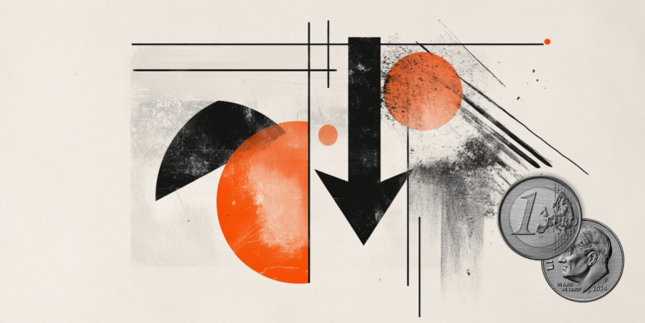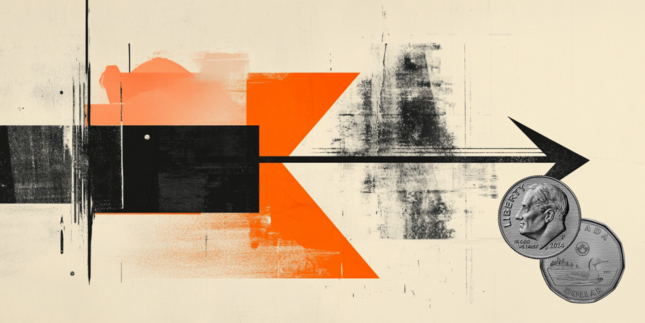AUD/USD rises to near 0.6400 as Australian Dollar outperforms
- AUD/USD ticks higher to near 0.6400 on Wednesday, but has been broadly sideways for over a week.
- The US economy is expected to have grown by 0.4% in the January-March period.
- RBA Q1 Trimmed Mean CPI data fell inside the central bank’s range of 2%-3%.
The AUD/USD pair trades slightly higher near 0.6400 during European trading hours on Wednesday. The Aussie pair ticks higher as the Australian Dollar (AUD) performs strongly despite soft Reserve Bank of Australia (RBA) Q1 Trimmed Mean Consumer Price Index (CPI) data.
Australian Dollar PRICE Today
The table below shows the percentage change of Australian Dollar (AUD) against listed major currencies today. Australian Dollar was the strongest against the Japanese Yen.
| USD | EUR | GBP | JPY | CAD | AUD | NZD | CHF | |
|---|---|---|---|---|---|---|---|---|
| USD | 0.25% | 0.38% | 0.56% | 0.02% | -0.10% | 0.23% | 0.21% | |
| EUR | -0.25% | 0.14% | 0.31% | -0.26% | -0.37% | -0.02% | -0.04% | |
| GBP | -0.38% | -0.14% | 0.13% | -0.36% | -0.50% | -0.16% | -0.19% | |
| JPY | -0.56% | -0.31% | -0.13% | -0.54% | -0.65% | -0.26% | -0.32% | |
| CAD | -0.02% | 0.26% | 0.36% | 0.54% | -0.12% | 0.22% | 0.22% | |
| AUD | 0.10% | 0.37% | 0.50% | 0.65% | 0.12% | 0.35% | 0.32% | |
| NZD | -0.23% | 0.02% | 0.16% | 0.26% | -0.22% | -0.35% | -0.03% | |
| CHF | -0.21% | 0.04% | 0.19% | 0.32% | -0.22% | -0.32% | 0.03% |
The heat map shows percentage changes of major currencies against each other. The base currency is picked from the left column, while the quote currency is picked from the top row. For example, if you pick the Australian Dollar from the left column and move along the horizontal line to the US Dollar, the percentage change displayed in the box will represent AUD (base)/USD (quote).
The underlying inflation data grew moderately by 2.9% year-on-year, as expected, slower than the prior release of 3.3%, revised higher from 3.2%. The CPI data has fallen in the RBA’s range of 2%-3% for the first time since the last quarter of 2021. Soft inflation data has increased market expectations that the RBA could reduce interest rates in the May policy meeting.
Meanwhile, the US Dollar (USD) gains ahead of a string of United States (US) economic data, notably Q1 Gross Domestic Product (GDP), releasing in the North American session.
The US Dollar Index (DXY), which tracks the Greenback’s value against six major currencies, rises to near 99.45.
Economists have anticipated a moderate US economic growth of 0.4% in the first quarter of the year on an annualized basis, much slower than the 2.4% expansion recorded in the last quarter of the previous year. Lower US economic growth forecasts appear to be the consequence of tariffs raised by US President Donald Trump on his trading partners.
Additionally, investors will also focus on the US ADP Employment data for April and the Personal Consumption Expenditure Price Index (PCE) data for March, which will influence market expectations for the Federal Reserve’s (Fed) monetary policy outlook.
However, the pair has been broadly sideways for over a week amid uncertainty over trade relations between the US and China. Hopes of a de-escalation in the trade war between Washington and Beijing have diminished as the tussle between them has become more of a “dominance”.
US Treasury Secretary Scott Bessent stated on Monday that China should initiate trade talks. I believe that it’s up to China to de-escalate, because they sell five times more to us than we sell to them,” Bessent said.
Australian Dollar FAQs
One of the most significant factors for the Australian Dollar (AUD) is the level of interest rates set by the Reserve Bank of Australia (RBA). Because Australia is a resource-rich country another key driver is the price of its biggest export, Iron Ore. The health of the Chinese economy, its largest trading partner, is a factor, as well as inflation in Australia, its growth rate and Trade Balance. Market sentiment – whether investors are taking on more risky assets (risk-on) or seeking safe-havens (risk-off) – is also a factor, with risk-on positive for AUD.
The Reserve Bank of Australia (RBA) influences the Australian Dollar (AUD) by setting the level of interest rates that Australian banks can lend to each other. This influences the level of interest rates in the economy as a whole. The main goal of the RBA is to maintain a stable inflation rate of 2-3% by adjusting interest rates up or down. Relatively high interest rates compared to other major central banks support the AUD, and the opposite for relatively low. The RBA can also use quantitative easing and tightening to influence credit conditions, with the former AUD-negative and the latter AUD-positive.
China is Australia’s largest trading partner so the health of the Chinese economy is a major influence on the value of the Australian Dollar (AUD). When the Chinese economy is doing well it purchases more raw materials, goods and services from Australia, lifting demand for the AUD, and pushing up its value. The opposite is the case when the Chinese economy is not growing as fast as expected. Positive or negative surprises in Chinese growth data, therefore, often have a direct impact on the Australian Dollar and its pairs.
Iron Ore is Australia’s largest export, accounting for $118 billion a year according to data from 2021, with China as its primary destination. The price of Iron Ore, therefore, can be a driver of the Australian Dollar. Generally, if the price of Iron Ore rises, AUD also goes up, as aggregate demand for the currency increases. The opposite is the case if the price of Iron Ore falls. Higher Iron Ore prices also tend to result in a greater likelihood of a positive Trade Balance for Australia, which is also positive of the AUD.
The Trade Balance, which is the difference between what a country earns from its exports versus what it pays for its imports, is another factor that can influence the value of the Australian Dollar. If Australia produces highly sought after exports, then its currency will gain in value purely from the surplus demand created from foreign buyers seeking to purchase its exports versus what it spends to purchase imports. Therefore, a positive net Trade Balance strengthens the AUD, with the opposite effect if the Trade Balance is negative.
Forex News
Keep up with the financial markets, know what's happening and what is affecting the markets with our latest market updates. Analyze market movers, trends and build your trading strategies accordingly.











